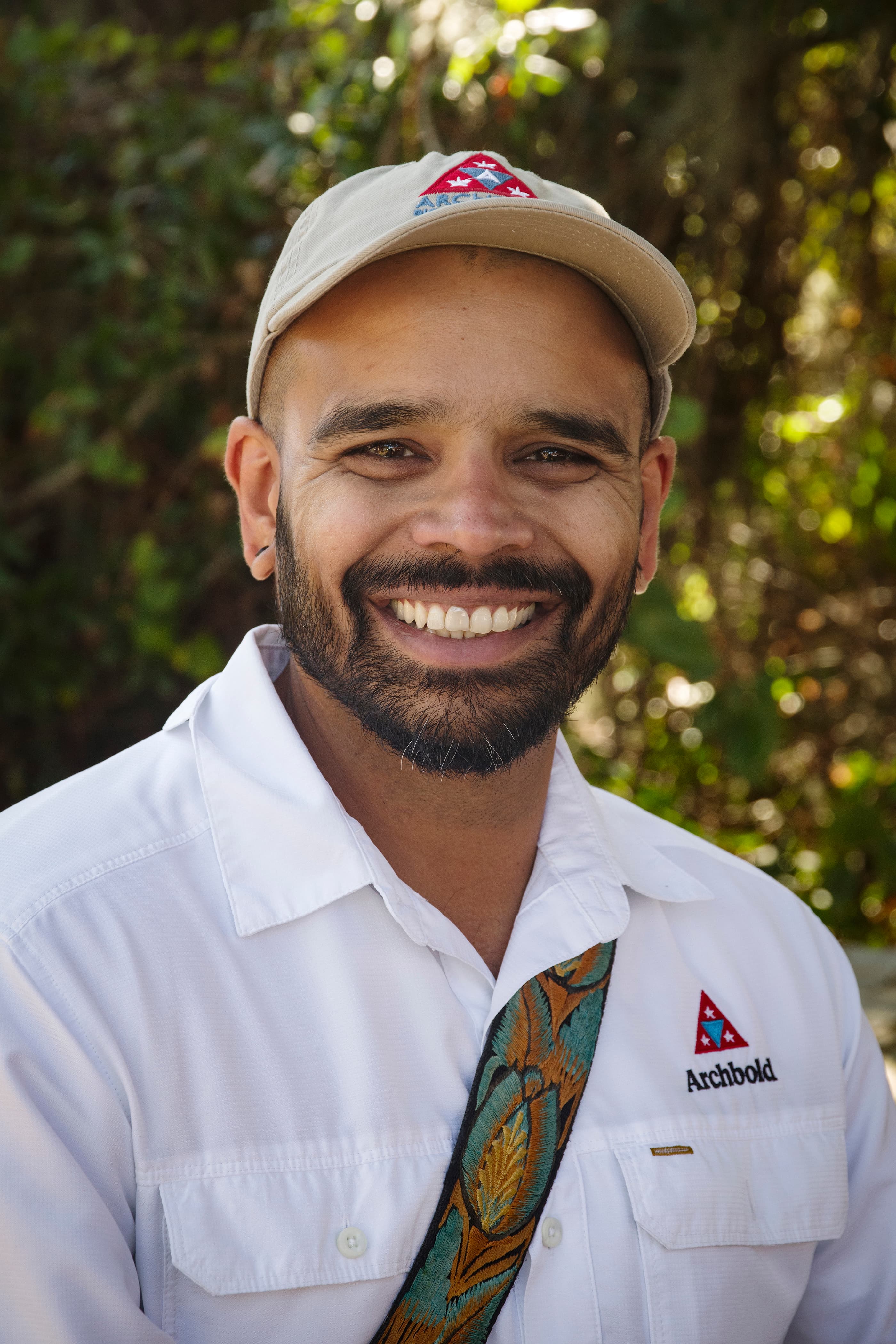
Sahas Barve, Ph.D.
John W. Fitzpatrick Director of Avian Ecology, Assistant Research Biologist
Sahas grew up in India and got his PhD from Cornell University in 2017. Sahas is an integrative biologist broadly interested in the evolutionary ecology and conservation biology of birds with research emphasis on cooperative breeding in birds. Beyond Florida Scrub-Jays, Sahas also studies Acorn Woodpeckers in California and birds in the Himalayas. Sahas is an avid birder and cook, and loves listening to Indian classical music.
Email: sbarve@archbold-station.org
Recent Publications:
- Barve S., Bakley T. D., Tringali A., Fitzpatrick J.W., Bowman R. 2024. Warm winters lead to increased breeding effort, but lower reproductive success: Hidden costs of climate warming in a threatened bird. Ornithology ukae053
- Beauchamp G., Barve S. 2024. Gazing strategies among sentinels of a cooperative breeder are repeatable but unrelated to survival. Biology 13:458
- Bala R., Kumar S.R., Gokhale P., Mohan D., Barve S. 2024. House sparrows Passer domesticus show an increase in body size and dorsal feather insulation along a Himalayan elevational gradient. Journal of Field Ornithology 95(2):10
- Heather M. H., Bakley T., Barve S. 2024. Florida Scrub-Jay (Aphelocoma coerulescens) pair constructs highest nest on record for the species. Florida Field Naturalist 52: 11-16
- Menon T., Ramesh V., Barve S. 2023. Himalayan birds that show the greatest elevational shifts remain within the narrowest thermal regimes. Global Ecology and Biogeography 32: 2111-2121
- Johnson A.E.*, Barve S.*, Dreiss L., Shizuka D., Walters E.L. 2023. Smoke alters patterns of movement and association in a cooperatively breeding bird. Current Biology 19: R996-997. * denotes equal co-authors.
- Beauchamp G., Barve S. 2023. Multiple sentinels in a cooperative breeder synchronize rather than coordinate gazing. Animals 13:1524
- Koenig W.D., Barve S., Haydock J., Dugdale H.L., Oli M.K., Walters E.L. 2023. Inclusive fitness of cooperative polygamy in the acorn woodpecker. Proceedings of the National Academy of Sciences, USA 120: e2219345120 Link
- Barve S., Daniel Cadena, C. 2022. Variation in insulative feather structure in songbirds replacing each other along a tropical elevation gradient. Ecology and Evolution 12: e8698. Link
- Shizuka D., Barve S., Johnson A, Walters E. L. 2022. Constructing social networks from automated telemetry data: a worked example using within- and across-group associations in cooperatively breeding birds. Methods in Ecology and Evolution 13: 133-143
- Thompson C.L., Alberti M., Barve S., Battistuzzi F.U., Drake J.L., Govaert L., Partridge C., Yang Y. 2021. Integrative and Comparative Biology), Back to the future: Reintegrating biology to understand how past eco-evolutionary change can predict future outcomes. Integrative and Comparative Biology 61:2218-2232 Link
- Barve S., Riehl C., Walters E.L., Haydock J.,Dugdale H.L., Koenig W.D. 2021. Lifetime reproductive benefits of cooperative polygamy vary for males and females in the acorn woodpecker (Melanerpes formicivorus). Proceedings of the Royal Society-B 288: 20210579 * Chosen as cover article
- Barve S., Ramesh V., Dotterer T.M., Dove C.D. 2021. Elevation, evolutionary origin, and body size drive variation in thermo-insulative feather structure of Himalayan birds. Ecography 44: 680-689
- Barve S., Lahey A.S., Brunner R.M., Koenig W.D., Walters E.L. 2020. Woodpecker wars: Tracking soldiers and spectators with telemetry. Current Biology 30: R982-R983 * Chosen as cover article
- Barve S., Shankar Raman T. R., Jathar G., Datta A. 2020. Guidelines for conducting research on nesting biology of Indian birds. Indian Birds 16: 10-11 # Invited manuscript
- Barve S., Shankar Raman T. R., Jathar G., Datta A. 2020. When and how to study nesting biology of Indian birds: research needs, ethical considerations, and best practices. Indian Birds 16:1-9 #Invited manuscript
- Barve S., Hagemeyer N., Winter R., Chamberlain S., Koenig W., Winkler D., Walters E. 2020. Wandering woodpeckers: foray behavior in a social bird. Ecology 101: e02943
Curriculum Vitae